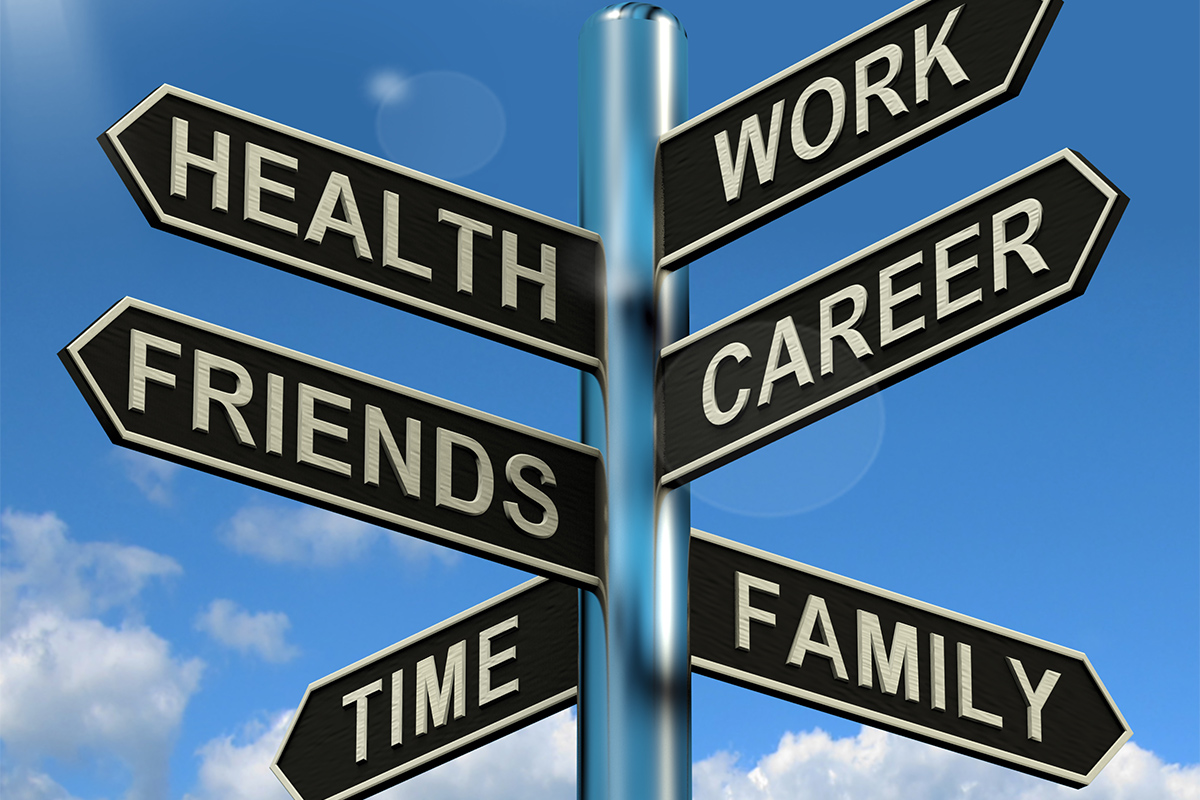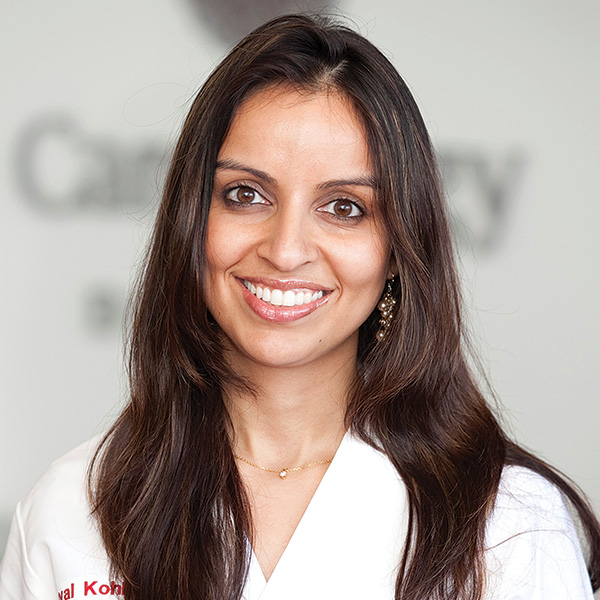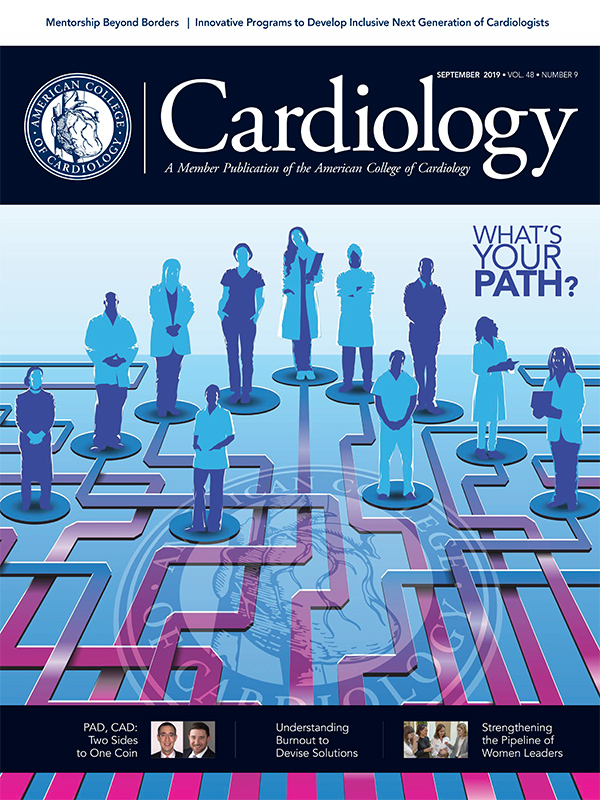Conversations With Kohli | Understanding Burnout to Devise Solutions

A 40-year-old woman presents with a chief complaint of physical and mental exhaustion. As you delve into the history of her present illness, you learn her symptoms are occurring almost daily, are triggered by going to work, get better on the weekends, and wax and wane in intensity but never completely resolve.
She has been reporting escalation of her symptoms over the past two years to the point they are now affecting her relationship with her husband and causing lack of engagement in her relationship with her two-year-old son and close friends. She has gained weight, stopped exercising, become cynical and hopeless, and has lost all sense of personal accomplishment. She denies smoking, but admits to regular daily moderate alcohol use to cope with her symptoms.
She works as a cardiologist.
She dreads Monday mornings, which bring her the lineup of patients who create in her a constant worry about balancing delivery of empathetic, high-quality patient care, while at the same time juggling the demands of the electronic medical system, administration, billing, regulatory agencies, patient-satisfaction surveys, family and personal well-being. She has tried vacationing, talking to friends, meditation and "mindfulness" without any lasting benefit.
On physical exam, she is a slightly disheveled woman who appears older than her stated age. She has excess abdominal adiposity. The remainder of the exam is unremarkable, and her CBC, TSH, Vitamin B12 and random cortisol are normal.
Burnout: Symptom or Diagnosis?
You may have diagnosed this young physician with "burnout." But a recent article by Duncan Rozario, MD, a surgeon in Canada, asks this important question: Is burnout a symptom of a bigger problem (such as a fundamentally broken health care system) rather than the diagnosis itself?1 And what, if any, treatments are being developed to address this complex condition, which is simultaneously a symptom and a diagnosis?
The Maslach Burnout Inventory, a validated scale for measuring physician burnout, evaluates the presence (or lack) of three parameters: 1) emotional exhaustion from one's work, 2) depersonalization towards patients and service provided, and 3) personal accomplishment, assessing feelings of competence and successful achievement in one's work.
Symptoms of burnout can include exhaustion, cynicism and decreased productivity. Burnout among physicians has become a national epidemic – one doctor kills himself/herself every day, far more than any in other profession. These days, it's increasingly more common to hear that colleagues are "burned out" rather than they aren't.
Studies have shown that across all medical specialties, of 100 physicians, 50 percent are emotionally drained, 40 percent have symptoms of depression and 30 percent have shown signs of burnout. Only 54 percent would choose medicine as a career again. Notably, 6-8 percent contemplated suicide in the past year.

Fortunately, the statistics are maybe slightly more encouraging among cardiologists. In a recent publication in the Journal of the American College of Cardiology, a survey of 2,274 cardiologists reported that about 27 percent was burned out – but nearly 50 percent reported being under stress with less energy.2 The highest prevalence of burnout was among mid-career cardiologists (eight to 21 years in practice), with women experiencing burnout more frequently than men (31 percent vs. 24 percent).
Sadly, burnout was higher among those who spent a greater proportion of their time each week in direct patient care (73 percent vs. 69 percent without burnout), regardless of practice setting. A recent Medscape survey found that 43 percent of U.S. cardiologists reported being burned out and/or depressed.3
Some physicians, including Simon G. Talbot, MD, Wendy Dean, MD, and Zubin Damania, MD, (who affectionately goes by his stage name of ZDoggMD), argue the more accurate term is "moral injury."4
Moral injury is a psychiatric term first used to describe a soldier's response after war when their moral beliefs or expectations were violated in a way that left an indelible mark on his or her identity and relationship with society. The moral injury in modern medicine is the utter inability to provide the high-quality medical care we all had once aspired to as budding medical students.
The metaphor of the modern physician as a soldier who goes to combat is an apt one. Just like the soldier, the modern physician lives on the edge of life and death every day, going into battle using every weapon in the armamentarium and making life-changing decisions within seconds – all while trying to put aside one's own emotions to solve complex problems. The difference, some say, is that during war you know your comrade has your back, whereas in the practice of medicine you are usually all alone.
Call it what you want. A symptom, a diagnosis, an ICD-10 code…whatever! The bottom line is we're burned out like never before. Why? Danielle Orfi, MD, writes that the health care system has exploited the moral compass of physicians who will never leave a patient in the lurch, to try to increase productivity and boost volume in an environment where reimbursement is rapidly shrinking. Orfi believes this is the recipe that leads to burnout.
At some point, we have all felt the negative effects of burnout, whether for a few hours, a day, a few days or for some several weeks. For most of us, thankfully, this is reversible or temporary.
But, when tachyphylaxis or tolerance develops to the strategies we normally use to combat burnout, and the risk factors for developing this condition continue to multiply out of control, how does the modern physician prevent succumbing?
Dianne McCallister, MD, chief medical officer of the Medical Center of Aurora in Colorado, has some ideas that she has implemented within her health system that have already led to an improvement in physician engagement. As a physician and an administrator, she jokes that she noticed that most physicians she worked with were "getting crispy, although not yet burned, around the edges."
She says that health care systems ask more and more of physicians and provides less and less. Resiliency, she theorizes, comes from being more and more in touch with the "why" we went into medicine in the first place. McCallister created and implemented a four-part system at her institution that is:
- Addressing the business aspect while creating quality service to patients, by optimizing operational issues with strategies such as reducing clicks in the EMR and creating a hotline where physicians can report issues that need to be solved to improve efficiency. Redesigning workflows and having scribes are additional strategies.
- Redefining medical staff culture, by creating an atmosphere where there is respect and transparency and includes physicians in strategic planning by administrators. There are "search and rescue" missions to save those who seem stressed and who are offered additional support.
- Creating an atmosphere of learning through continuing medical education and graduate medical education to encourage physician growth and leadership, both in medicine and business. McCallister notes the difference between how medicine is taught (stuff the head full of knowledge and then make a decision) and the way business decisions are made (find problems, plan through many situations and then decide). Physicians should learn to understand both sides.
- Practicing resilience, which should be the "WD40" for physicians. This consists of personalized attention/gratitude from the health system to physicians for all their toil, and weekly "group therapy" sessions where physicians can openly discuss topics that are usually internalized, such as death, difficult patient interactions and spirituality.
Other physicians, such as Pamela Wible, MD, help physicians combat burnout by allowing them to move away from "assembly line medicine" by designing their own practice environment. Her book Human Rights Violations in Medicine: A to Z Action Guide has gained popularity because it highlights the ways in which medicine has crossed human rights boundaries like no other profession.

For many physicians, burnout is not a diagnosis but a symptom. It speaks to a larger problem and hospital systems must move beyond the trendy but empty buzzwords of "physician wellness" and "mindfulness"and start shifting the responsibility from the individual physician to the health system as a whole. Ultimately, burnout is not a failure of the physician or his/her lack of resiliency or efficiency, but instead of our society.
Thankfully, organizations such as the ACC recognize the importance of stopping this epidemic. The College has embraced the Quadruple Aim of improving health, enhancing patient experience, reducing cost and physician wellness and integrated it within its current Strategic Plan.
So, what do you prescribe to the 40-year-old cardiologist in front on you? How about a little more time and personalized attention than the usual 15-minute visit… that is, if the health system allows you to.
Ten Tips to Combat Burnout, Address Physician Wellness5
- Re-examine the elements of your work causing burnout (i.e., being in clinic all the time, writing too many grants) so you can work to mitigate these.
- Return to your original values and ask what drives you and try to prioritize what you enjoy doing/find meaningful and only say yes to those things you enjoy.
- Don't blame yourself if you're feeling burned out – it's not your lack of ability. When you're already pressed for time, mindfulness and yoga are difficult to incorporate into a busy schedule. Ask others for help when you can!
- Focus on your strengths and celebrate them rather than focusing on your mistakes and shortcomings.
- Establish a good support network and try to reconnect with your important relationships.
- Set boundaries for yourself and your patients. Allocate time for patient care outside the clinic or hospital and don't violate established boundaries.
- Work on becoming resilient, a skill that must be built.
- "Don't call in sick, call in well." Take a day for doing things that make you happy if you need it.
- Set priorities, realistic goals and give up perfectionism. There are times when your personal life takes over and times when your professional life takes center stage. Try not to set unrealistic goals that all things will be perfect at all times.
- "Put your own oxygen mask on before you put others' on." Schedule regular time for yourself.
Signs of Burnout
- Physical or mental exhaustion.
- Cynicism and depersonalization (you stop caring about patients or colleagues).
- Feeling less capable at work.
- You don't enjoy what you're doing.
- You don't feel like you're doing a "physician's job," but instead you're doing secretarial, billing and administrative work.
- You are angry or have a short fuse at work or at home.
- You are having trouble with interpersonal relationships.
- Burnout can sneak up on you like the frog in the hot water... you can be starting to burn out and not even realize it. Be honest with yourself and try to stay connected with your feelings.
ACC's New Clinician Well-Being Portal
You are not alone. Reach out to connect with peers and access resources for clinician well-being through ACC's new well-being portal. Portal Pathways include Connect and Discuss, an interactive online discussion, Reducing Administrative Burden, Diversity and Inclusion, and Resources and Events.
Don't miss the case studies with actionable insights from the National Academy of Medicine's Action Collaborative on Clinician Well-Being and Resilience, of which the ACC is a part, that highlight innovative initiatives to reduce clinician burnout and support well-being. Visit the portal at ACC.org/ClinicianWellBeing.
References
- Rozario D. Burnout, resilience and moral injury: How the wicked problem of health care defy solutions, yet require innovative strategies in the modern era. Can J Surg 2019;62:E6-E8.
- Mehta LS, Lewis SJ, Duvernoy CS, et al. Burnout and career satisfaction among U.S. cardiologists. J Am Coll Cardiol 2019;73:25:3345-8.
- Kane L. Medscape cardiologist lifestyle, happiness & burnout report 2019. Available here. Accessed Aug. 14, 2019.
- Talbot SG, Dean W. Physicians aren't 'burning out.' They're suffering from moral injury. Available here. Accessed Aug. 1, 2019.
- Charged Podcast Battling Burnout: Thriving in Modern Health Care. June 26, 2019. Available here. Accessed Aug. 14, 2019.
Keywords: ACC Publications, Cardiology Magazine, Burnout, Professional, Achievement, Adiposity, Delivery of Health Care, Depersonalization, Depression, Education, Medical, Continuing, Education, Medical, Graduate, Empathy, Goals, Hospitals, Human Rights, International Classification of Diseases, Leadership, Medical Staff, Hydrocortisone, Meditation, Military Personnel, Patient Care, Patient Satisfaction, Physicians, Psychotherapy, Group, Risk Factors, Smoking, Spouses, Stress Disorders, Post-Traumatic, Students, Medical, Surgeons, Tachyphylaxis
< Back to Listings


